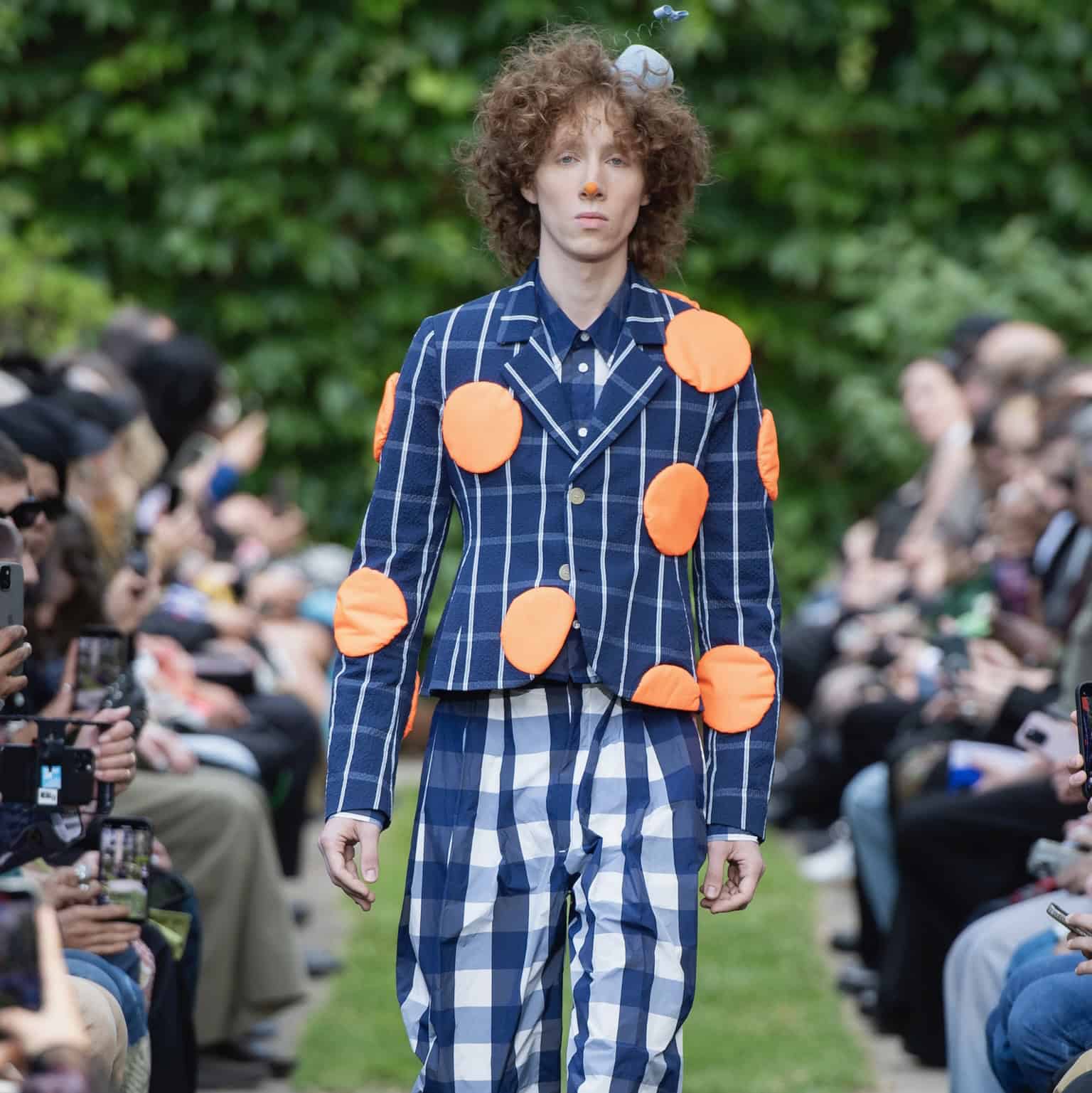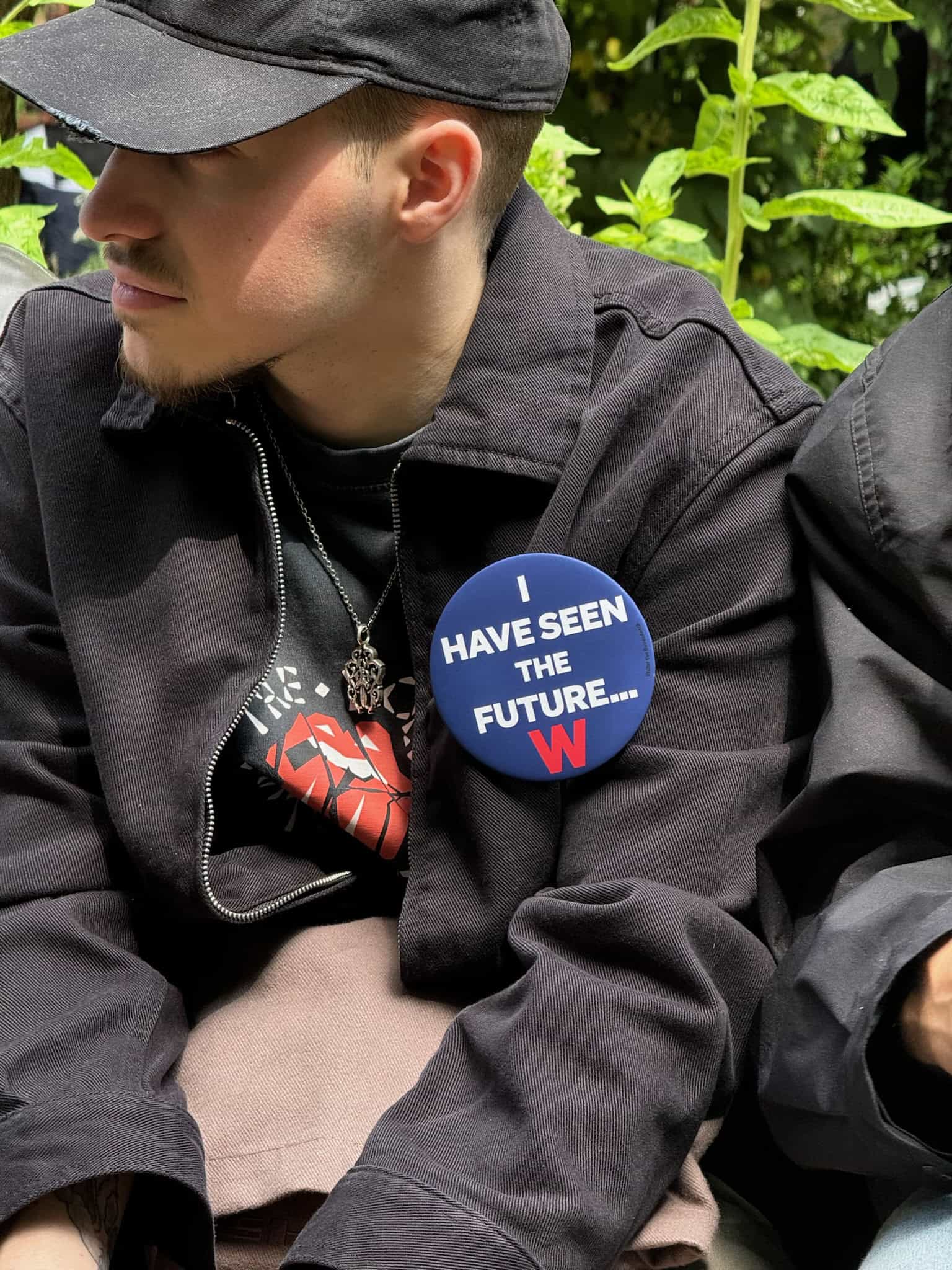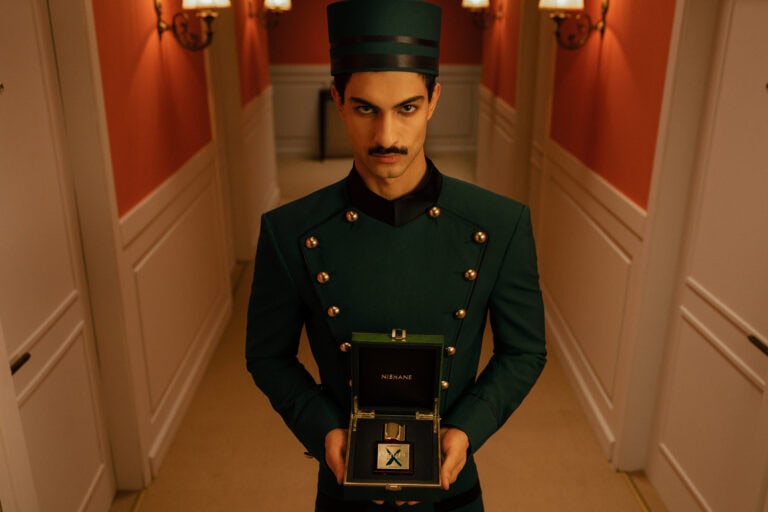
We “HAVE SEEN THE FUTURE…” With Walter Van Beirendonck SS2025 Collection
Camille Blanchard



It began even before the runway show started. I spoke with influencer Lyas (@ly.as) about his thoughts on the upcoming collection by Belgian designer Walter Van Beirendonck. In response, he said, “As usual, I expect it to be political.” When the music started, I understood why the word “political” was indeed the proper description.
“The world explodes and I’m DREAMING. The world explodes and I’m HAPPY, the world explodes and I’m DANCING.” – Walter Van Beirendonck
The performance started with music typically associated with a circus, and as the outfits were unveiled, the inspiration became evident. They drew on the complex figure of the clown. A character as vibrant and joyful in appearance as it is melancholic and somber within. Striving to bring together the opposing factions of the circus.
“I HAVE SEEN THE FUTURE…” contrasts tight, form-fitting designs against loose, flowing garments in both transparent and thick fabricks. Walter Van Beirendonck also introduced a collaboration with G-Star Raw, featuring denim creations entirely free of traditional stitching. Instead, these pieces are assembled using glue and tape. The most inventive aspect of this approach is his use of playful puzzle-piece seams in his tailored designs. Which can either be left open or seamlessly interlocked, adding a unique and dynamic element to the garments.
The collection delves into themes of contrast and duality. Exploring the juxtaposition of happiness and sorrow through the metaphor of the clown. The clown, often seen as a symbol of joy and frivolity. Is revealed to have a darker, more melancholic side upon closer inspection. This nuanced approach makes “I HAVE SEEN THE FUTURE…” a deeply thought-provoking and visually compelling collection.


– “So what now?” – You will ask.
Now let’s delve into a deeper layer of the background story of this collection. WHY clowns and WHY the circus? After communicating with the studio and having gathered other independent opinions – we are ready to transpose them.
First of all, if we attempt to feel the depressed side of the clown, we can comprehend that there is a perpetual sense of drama and “Hunger Games” in both the clown’s head and the modern world. There are always extremes, and it appears that the most extreme viewpoints are heard first. In addition, there are significant challenges that must be faced that have already become constant in our daily lives. Despite everything, we must continue to search for happiness – for this vibrant and colourful clown’s outfit. Every day, get up early, and make small, gradual progress. Pretend and hold onto the hope that our actions can actually bring about change.
Secondly, we can interpret the clown’s character in a more introspective way—as a mirror to our self-examination. Nowadays, we find ourselves entangled in an ever-growing array of activities, commitments, and pursuits that increasingly bind us within.
- Are we satirising our own existence and authentic “I”? – Perhaps.
Nowadays, people are more concerned with their outward appearance, public personas. The façade they put on for other people, than with their true selves. Or the innate personalities that are formed from birth through education and the nurturing of childhood dreams. Hence, every time, we are wearing the clown’s attire, this way mocking our true style.



What can we conclude about fashion, then? The story basically confirms what was said before. After an open discussion with Walter van Beirendonck, we came to the conclusion that nowadays, some prominent fashion labels seem to be taking their customers for a ride. Selling them uninspired and low-quality attire that trades solely on their renowned and long-established brand names. Despite their lack of creativity and the melancholy this entails. These major houses continue to have greater influence than independent designers who are bold and innovative. Hence, we can deduce that the luxury fashion arena has turned into nothing else than an elaborate spectacle where consumers, from the perspective of these brands, have been reduced to mere marionettes—or more fittingly, clowns. This dominant force has effectively engulfed the true individuality of personal style.
Now, that we HAVE ALL SEEN THE FUTURE, are we ready to accept or change it?
Article by Viktor Kozak
Share this post




